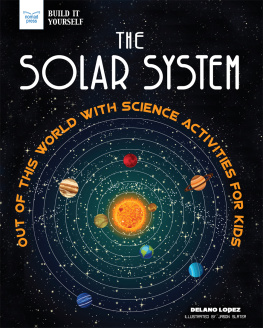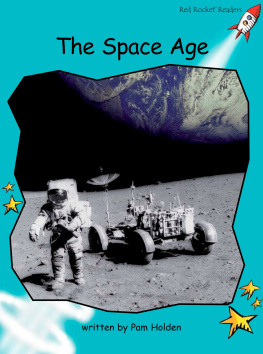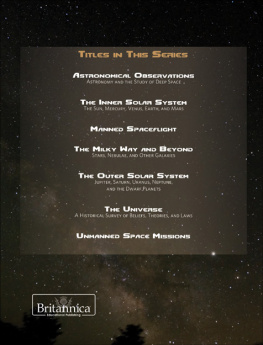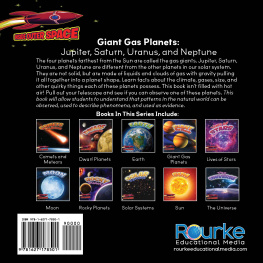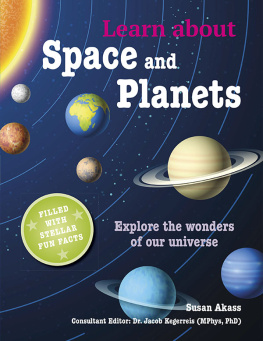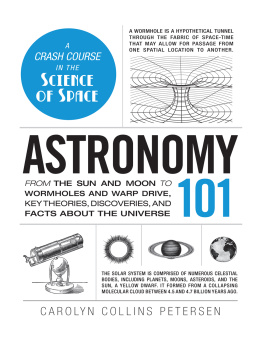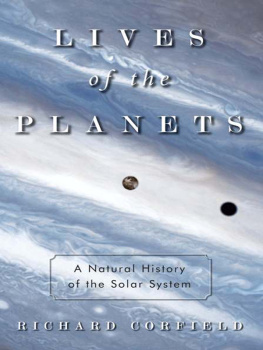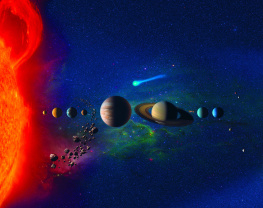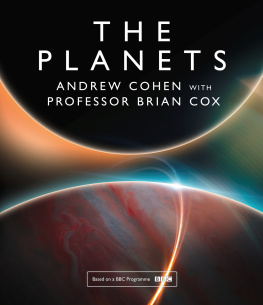Thank you for downloading this Simon & Schuster ebook.
Get a FREE ebook when you join our mailing list. Plus, get updates on new releases, deals, recommended reads, and more from Simon & Schuster. Click below to sign up and see terms and conditions.
CLICK HERE TO SIGN UP
Already a subscriber? Provide your email again so we can register this ebook and send you more of what you like to read. You will continue to receive exclusive offers in your inbox.
Facts from Space!
From Super-Secret Spacecraft to Volcanoes in Outer Space, Extraterrestrial Facts to Blow Your Mind!
Dean Regas

Avon, Massachusetts
Copyright 2016 by Dean Regas.
All rights reserved.
This book, or parts thereof, may not be reproduced in any form without permission from the publisher; exceptions are made for brief excerpts used in published reviews.
Published by
Adams Media, an imprint of Simon & Schuster, Inc.
57 Littlefield Street, Avon, MA 02322. U.S.A.
www.adamsmedia.com
ISBN 10: 1-4405-9701-4
ISBN 13: 978-1-4405-9701-5
eISBN 10: 1-4405-9702-2
eISBN 13: 978-1-4405-9702-2
Library of Congress Cataloging-in-Publication Data
Regas, Dean, author.
Facts from space! / Dean Regas.
Avon, Massachusetts: Adams Media, [2016]
LCCN 2016020321 (print) | LCCN 2016024632 (ebook) | ISBN 9781440597015 (pb) | ISBN 1440597014 (pb) | ISBN 9781440597022 (ebook) | ISBN 1440597022 (ebook)
LCSH: Astronomy--Popular works. | Solar system--Popular works. | Cosmology--Popular works.
LCC QB44.3 .R44 2016 (print) | LCC QB44.3 (ebook) | DDC 523.2--dc23
LC record available at https://lccn.loc.gov/2016020321
This publication is designed to provide accurate and authoritative information with regard to the subject matter covered. It is sold with the understanding that the publisher is not engaged in rendering legal, accounting, or other professional advice. If legal advice or other expert assistance is required, the services of a competent professional person should be sought.
From a Declaration of Principles jointly adopted by a Committee of the American Bar Association and a Committee of Publishers and Associations
Cover design by Erin Alexander.
Cover images Clipart.com; tashalex/Jeffrey Thompson/123RF.
Interior images Clipart.com; iStockphoto.com.
Introduction
Did you ever want to experience the microgravity of space? See whats hiding behind the clouds that shroud the surface of Venus? Learn what happens inside a nebula when a star is born?
If youve ever wanted to learn more facts about space, youre in the right placeand youre not alone! When I was ten years old and saw pictures of the beautiful ringed planet Saturn, I vowed that someday I would fly to Saturn and ride my bike around those rings. I didnt want to be an astronomer back then. I wanted to be an adventurer. My ten-year-old self dreamed of visiting far-off lands, and outer space was the farthest thing I could think of.
I became an astronomer instead of an adventurer, but with the facts in this book, Im still going to take you to newly discovered worlds. Here youll find facts about astronomical objects that will make you pause and see the universe in a whole new way. Filled with the accumulated knowledge of thousands of years of watching the skies, youll learn all you need to know about what it would be like to watch a Martian sunset, to swirl in Jupiters Great Red Spot, and skim the corona of the Sun. Your imagination will soar among the stars, see constellations from different perspectives, fall into a black hole, and more.
Every day my colleagues discover an asteroid in the solar system, a planet in another star system, a star or star cluster in the Milky Way, or even an entire, never-before-seen galaxy in the universe. Even PhD astrophysicists who have studied the universe their entire lives get their minds blown on a regular basis. And that is what makes astronomy such a great adventure. So grab this book and get ready to take a ride around the rings of Saturn and beyond3-2-1 blast off!
Chapter 1
Orbiting Earth: Tales of Humans (and Nonhumans) in Space
Space travel is not glamorous. Imagine being confined to your cabin on a cruise ship on a long ocean voyage, or traveling for a week in a bus that you can never leave. This will give you an idea of the conditions astronauts endure living in the final frontier. Its claustrophobic, its dirty, and the food is tasteless.
Anyway, youre weightless, which may seem fun at first, but it can actually cause nausea, sleep problems, sinus congestion, muscle loss, a puffy face, and wild and uncontrollable hair. And that doesnt even take into consideration the unmentionable bodily fluids that float around youthat you probably dont want to float around you.
You are rewarded for all this inconvenience and discomfort with one heck of a view. In orbit you would see the entire planet from a satellites viewpoint. Youd see a lot of blue: oceans, seas, lakes, and rivers. You could marvel at mountains, islands, as well as manmade wonders. You can watch cities from above and observe how they light up at night. Youd experience enough sunrises and sunsets to last a lifetime. Youd go where few have gone beforeaside from a select few astronauts of various ethnicities, a handful of dogs, and some literal guinea pigs. What an adventure!
First lets look at the telescopic advances that led us to dream of reaching the stars. Then well blast off to orbit the Earth and delve into what living in near weightlessness is likethe good, the bad, and the ugly.
Telescopes and Observatories
Through the Looking Glass
On September 25, 1608, a Dutch spectacle maker named Hans Lipperhey applied for a peculiar patent. About his invention Lipperhey wrote, All things at a very great distance can be seen as if they were nearby, by looking through glasses... Although lenses and eyeglasses had been manufactured since the fourteenth century, Lipperhey combined two lenses to create the first documented telescope.
Sight Unseen
By 1609, telescopes were on sale in Paris, demonstrated in Germany and Italy, and had attracted the attention of Galileo. After hearing the scantest details about such a device, Galileo made his own telescope in less than twenty-four hours. Galileo greatly improved on the design and began pointing the scope skyward. He documented the craters of the Moon, the phases of Venus, the moons of Jupiter, and even spots on the Sun. He then observed never-before-seen stars and published his observations.
Monster Telescopes
The larger the telescope, the better the view. And so a new generation of astronomers began making their telescopes biggersome reaching gigantic proportions. In the mid-1600s, Dutch astronomer Christiaan Huygens worked with his brother Constantijn to construct a tubeless telescope in which the two lenses were separated by 123 feet. Polish astronomer Johannes Hevelius topped that with a 150-foot-long monstrosity that he claimed was easy to use (with the help of a crew of assistants operating the ropes and pulleys).
As Big As They Come
The use of the lenses that gave refracting telescopes their name also meant that they had a limited size. If the lenses were too large, their weight could not be adequately supported. The largest refractor in the world is forty inches in diameter and is still used at the Yerkes Observatory on Geneva Lake in Williams Bay, Wisconsin.
Next page


